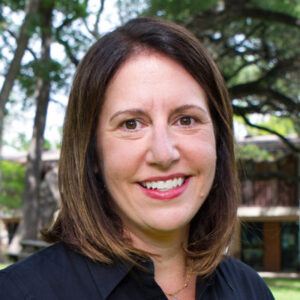A binky balanced on a retaining wall. A mitten fastened to a fence post. A hairband hooked on a cedar branch.
These are just a few of the many stray objects I’ve spotted over the years on walks or jogs in Austin, Texas — along Shoal Creek Boulevard, around Lady Bird Lake, in the Wild Basin Wilderness Preserve. Displayed with obvious care, these common objects take on an uncommon beauty: They have been dropped, unnoticed, by their owners-on-the-go; but they have also been found and made visible again by fellow travelers.
I’ve come to think of these anonymously curated objects as urban cairns. Strictly speaking, a cairn (from the Scottish Gaelic càrn) is a human-made pile of rocks. Cairns of all shapes and sizes have been used since prehistoric times as landmarks, memorials, monuments, astronomical tools, and signposts.
Even today, they persist. Along countless hiking trails, cairns function as pseudo-druidic greetings from one nature lover to the next: “Hello,” they say. “I was here. We were here. Now you’re here, too.” Hikers who pause to add a stone may feel a small but powerful connection across time, in a single coordinate of space, with other unknown humans. The act may feel like a quiet gesture of resistance: In a world where many of our relational moves are born of mixed motives — getting ahead, being liked, fulfilling a duty — adding a stone to a cairn is a form of connection that is sheerly human, sheerly existential. “I was here. You are here. This is good. Hello.”
The urban cairn — the water bottle on the bench, the lovey on the ledge — is like this, too. It tells of human presence and connection in a particular place. But it does more: It expresses hope. It marks the lost as found, and makes further findings possible.
When I think about the many ministries and initiatives that originate at Seminary of the Southwest, it occurs to me that ours is a campus of human cairns: a place where the invisible or disregarded are lifted up, in hope, to be seen.
On a regular basis, special services in Christ Chapel centralize those who may feel marginalized by current trends and policies in American civic life. Our students travel long distances to stand in solidarity with threatened populations — water protectors at Standing Rock, hurricane survivors on the Gulf Coast — and speak boldly about what they have witnessed. Black History Month and Hispanic/Latino Heritage Month celebrate the riches of racial diversity. Guest speakers such as the Rev. Dr. Wil Gafney and Dr. James Alison call our attention to less visible members of our world and tradition. In her weekly sermons, Dean Kittredge regularly reminds us to recognize the peripheral figures in scripture and in the world. And our annual arts journal encourages community members to coax their creative selves into the light.
Making the unseen seen is both the nature and the work of the Christian faith. Our liturgical calendar marks this truth with Epiphany, a season that begins with the visitation of the Christ child by the Magi and recently culminated with his presentation in the Temple. These events dramatize God-made visible; they make the unimaginable Other suddenly and vividly present. They remind us of God’s primordial utterance: “I am here. You are here. It is good. Hello.”
Both Epiphany, observed in January, and Lent, which begins this week, are times of the year when many of us resolve to adopt practices that elevate our better selves. These practices help us connect existentially with the person we hope ourselves to be and with the God who wants to be made visible in us.
Noticing the unnoticed — a pacifier, a pebble, a people, the person within — and raising it up in solidarity with others. Making the invisible visible, in hope. It is the Christian message and the Christian way.
- Whom or what can you lift up and make visible in the world today?
- What parts of your self want to be revealed to the world?
- How does Christ long to be made visible in you?


